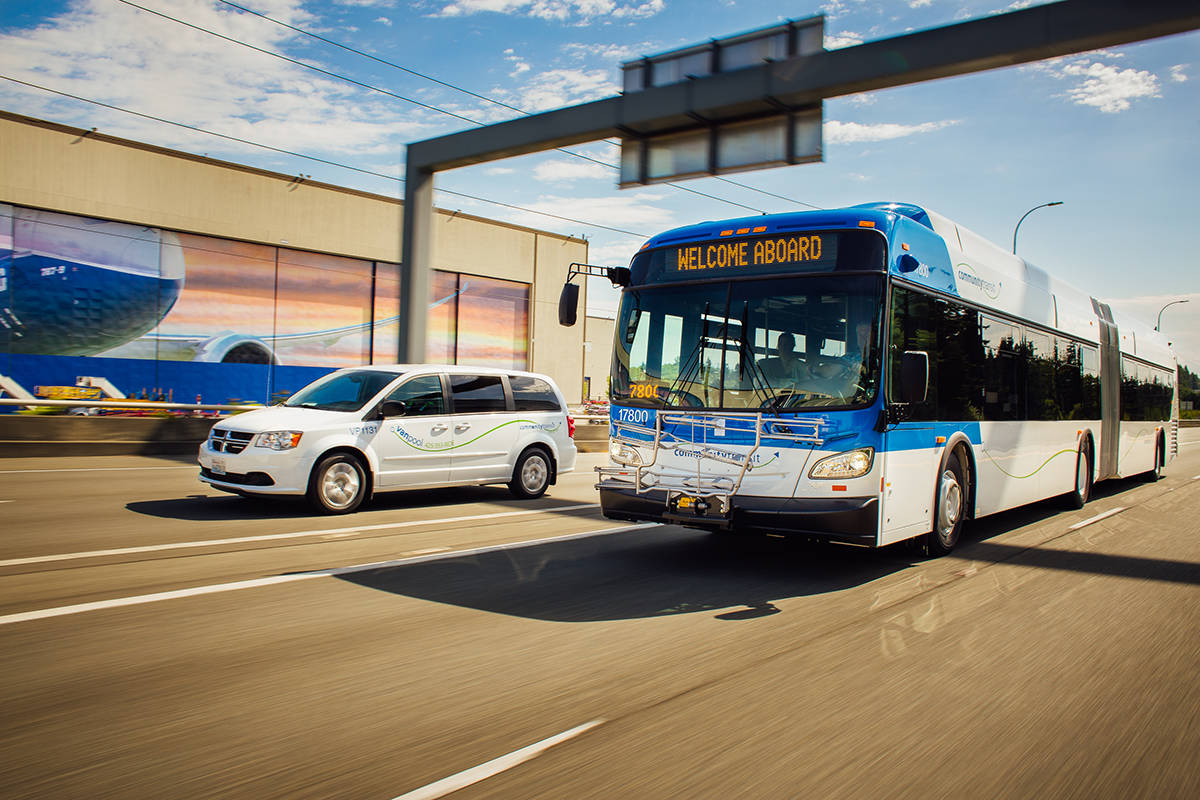As some workers in our communities have been working from home in recent months, a vital segment of our population has stayed in motion. Essential workers have been on the move, and for many, public transit is how they get where they need to be.
Community Transit provides bus, vanpool and paratransit services in Snohomish County —helping to get people to work, appointments, the grocery store and wherever else they need to go. Since the beginning of the COVID-19 pandemic, transit agencies across Washington have had the added challenge of providing essential transportation services while also rolling out new safety and disinfection practices to help limit the spread of the virus.
With guidance from public health officials, Community Transit has implemented new safety measures such as nightly disinfecting of all buses and paratransit vehicles, closing off some bus seats to allow better physical distancing between riders, and providing recommended personal protective equipment for drivers and employees.
Now as more people venture out into public spaces and onto public transportation, Community Transit is recommending transit riders continue to follow public health guidance to help keep transit safe for all.
Here are some of the ways you can help keep yourself and others safe while riding transit:
- Wear face coverings;
- Cover coughs and sneezes;
- Stay home if you are sick, diagnosed with COVID-19 or suspect you may have it;
- Wash hands regularly with soap and water for at least 20 seconds;
- Use hand sanitizer containing at least 60% alcohol when soap and water are not available;
- Observe signs on seats designed to create physical distance between riders;
Use an ORCA card for a contact-free payment process.
Community Transit also recommends taking advantage of the digital tools they provide to help manage your trip and stay informed while you ride — plan your trip, locate your bus in real-time, find nearby bus stops, and receive alerts when conditions change.
Public transportation can be a key ingredient in creating accessibility, sustainability, and equity within communities. With these safety measures in place and with the help of riders following public health guidelines, public transit can continue to be an essential and reliable transportation option for anyone who needs to travel in our region.
For more safe transit riding tips and to learn how Community Transit is working to keep our communities safely on the move, visit communitytransit.org/safety.

























